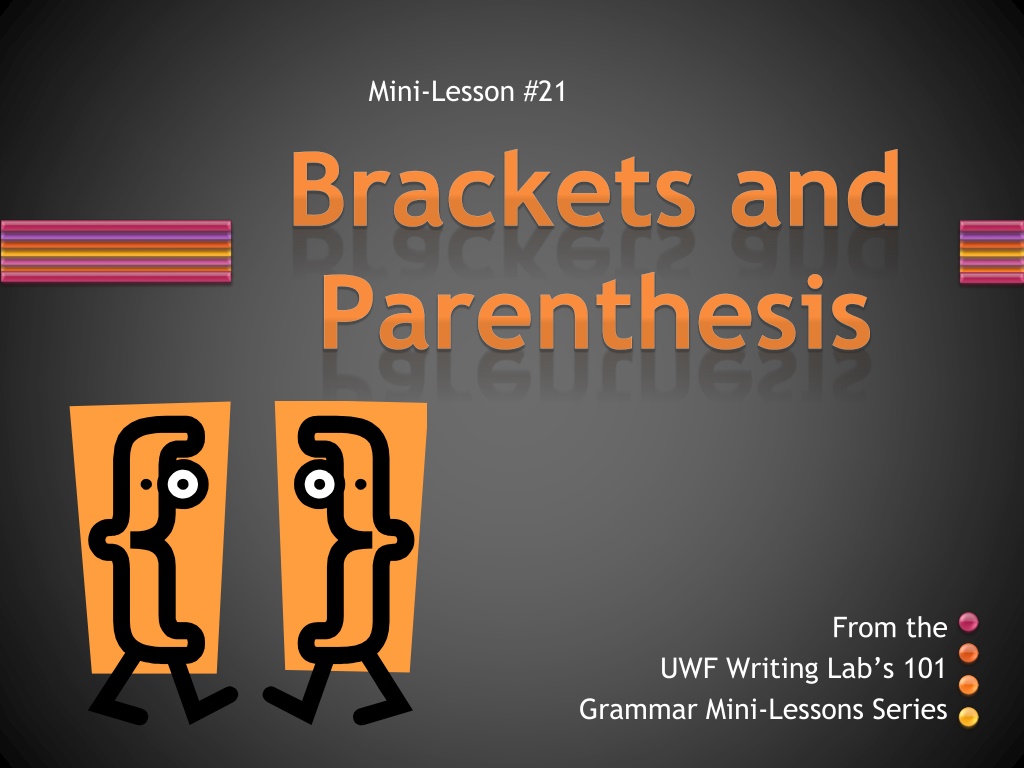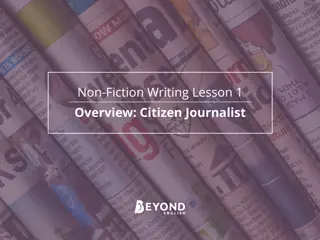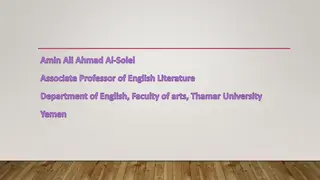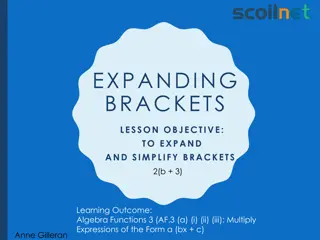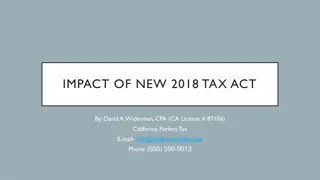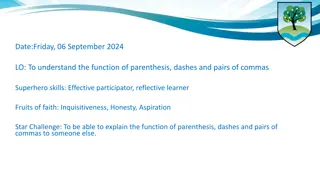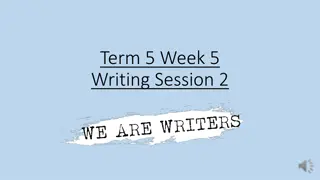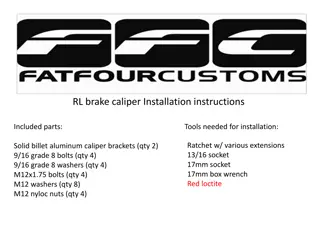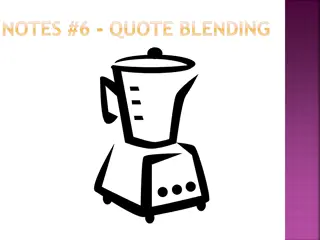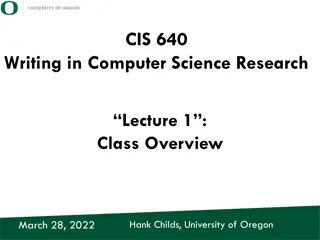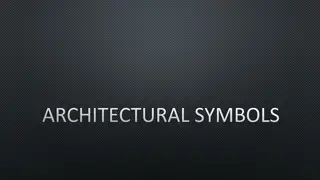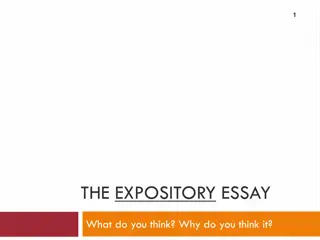Brackets and Parenthesis Usage in Writing
Brackets and parenthesis serve specific purposes in writing, from enclosing explanations to providing additional information without disrupting the sentence flow. Learn when to use each and explore examples for clarity in using these punctuation marks effectively.
Download Presentation

Please find below an Image/Link to download the presentation.
The content on the website is provided AS IS for your information and personal use only. It may not be sold, licensed, or shared on other websites without obtaining consent from the author.If you encounter any issues during the download, it is possible that the publisher has removed the file from their server.
You are allowed to download the files provided on this website for personal or commercial use, subject to the condition that they are used lawfully. All files are the property of their respective owners.
The content on the website is provided AS IS for your information and personal use only. It may not be sold, licensed, or shared on other websites without obtaining consent from the author.
E N D
Presentation Transcript
Mini-Lesson #21 Brackets and Parenthesis From the UWF Writing Lab s 101 Grammar Mini-Lessons Series
Do not use brackets when parenthesis are called for or parenthesis when brackets are needed. Brackets are used to enclose an explanation, comment, or correction that is inserted into quoted material.
Brackets Use the word sic (meaning so of thus ) in brackets to indicate that you have quoted an error in the original. Examples: The supermarket ad reads, Bostin fern s [sic] for sale. [O]ne of the best on television is how a company spokesperson described the Texaco commercial. The spokesperson also said, The Texaco station [outside Chicago] is one of the busiest in the nation.
Parenthesis Use parenthesis to enclose explanatory or interrupting elements that add information but might otherwise disrupt the sentence. Examples: Attila the Hun (circa A.D. 406-453) invaded the Eastern Roman Empire. No one did well on the French test (except Jacques, of course). Roy and I travelled all day and night (he was the driver; I was the navigator) and reached Los Angeles by dawn. Punctuation marks (commas, periods, semicolons) that belong to the sentence come after the parenthesis. [O]ne of the best on television is how a company spokesperson described the Texaco commercial (it s the one with the hound dog singing The Thrill is Gone ).
